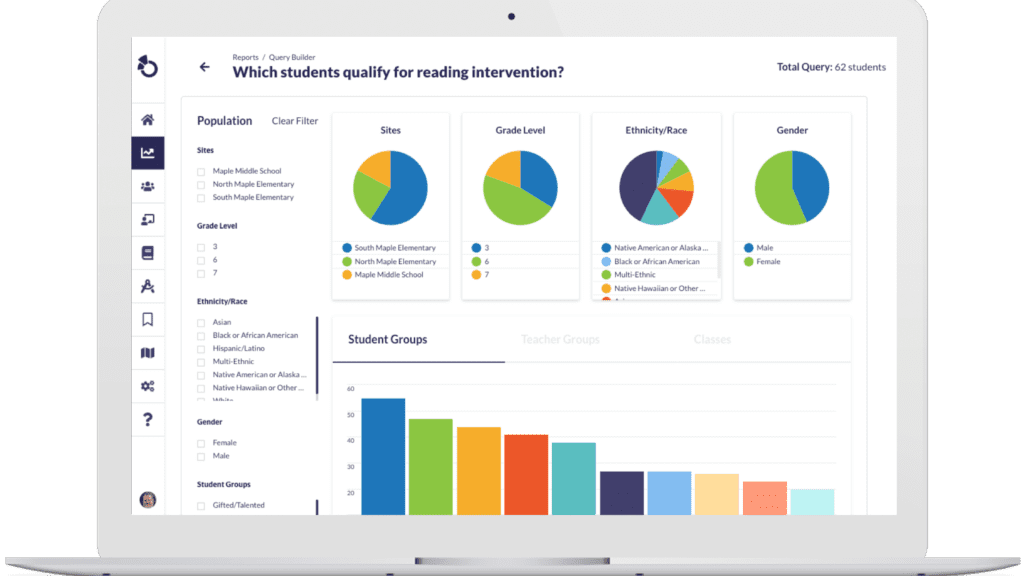How Student Progress Monitoring Tools Help Teachers Focus on Growth
By: Otus
You know progress monitoring is important. It provides a quick snapshot of student growth over time—helping you proactively adjust or alter course to address specific skills. At the same time, you also know how challenging and time-consuming progress monitoring can be.
“To effectively monitor student progress, your classroom assessments must be accurate and consistent. This takes time. In addition, it takes time to give the assessment, analyze the results, and act on the data,” says Chris Hull, Chief Product Officer at Otus and 7th Grade Teacher. “Whether you’re a middle school teacher with 120 students or an elementary teacher with 20 students every subject, this can be daunting.”
Luckily, technology exists to make student progress monitoring easier to help provide a more holistic picture of student performance, and make instructional decisions.
Traditional K-12 Progress Monitoring
Traditionally, teachers and school psychologists gather student progress data across several different systems. “This makes it extremely difficult to get a complete picture,” says Phil Collins, SVP of Education at Otus. “It takes a lot of time and energy to pull raw data out of 4-5 separate systems and build your own trendline of student growth.”
In short, traditional student progress monitoring is inefficient. And if teachers want to create a visual representation of student growth over time, there’s a steep learning curve.
How EdTech Improves Progress Monitoring for Teachers
Alternatively, classroom management systems like Otus make it easier to assemble a variety of data points in a single location. Collins says, “Otus puts all the right tools at your fingertips so you can see the complete picture of student performance in one place.”
Without tools like Otus, it’s difficult for teachers to view progress monitoring data in the context of the whole student. Collins says, “Ideally, all the data points you have are telling the same story, but if they’re not, Otus provides the information you need to ask the right questions.” When teachers see incongruent data in Otus, they can assess why one intervention or strategy is helping a student, while another is not. This insight inspires important conversations about student growth.
How Otus Saves Teachers Time by Making Student Progress Monitoring Easier
So, what does this actually look like? With Otus, teachers can create, assess, evaluate, and act on student data in a single platform. Here are three specific ways teachers can improve progress monitoring and save time with Otus.
Import Progress Monitoring Data. The platform gives teachers the ability to import progress monitoring data on a weekly basis. This lets teachers, administrators, and everyone working with a student see a comprehensive picture of student growth.
Otus Lessons Module. Teachers can create a lesson plan with activities, resources, and videos. Whether done individually or in a group, a teacher can view a live progress monitor to see which activity each student is on and who is close to completing the lesson.
Otus Standards Progress. Otus makes it possible for teachers to look at student standard performance over time. This helps teachers monitor student progress toward mastery. Joey Shulman, User Experience Manager at Otus, says, “This long-term monitoring helps teachers quickly identify and differentiate students who need more scaffolding to achieve their goal.”
The Bottom Line
Progress monitoring shouldn’t be daunting or time-consuming. Technology like Otus can help teachers become more aware of how students are learning and the pace at which they are progressing. Progress monitoring data is much more powerful when you can put it into the context of who the student is—beyond the data.
Related Resources
Request a demo!
See exactly how Otus can help your school accelerate student growth and improve student outcomes – all while saving educators time.





